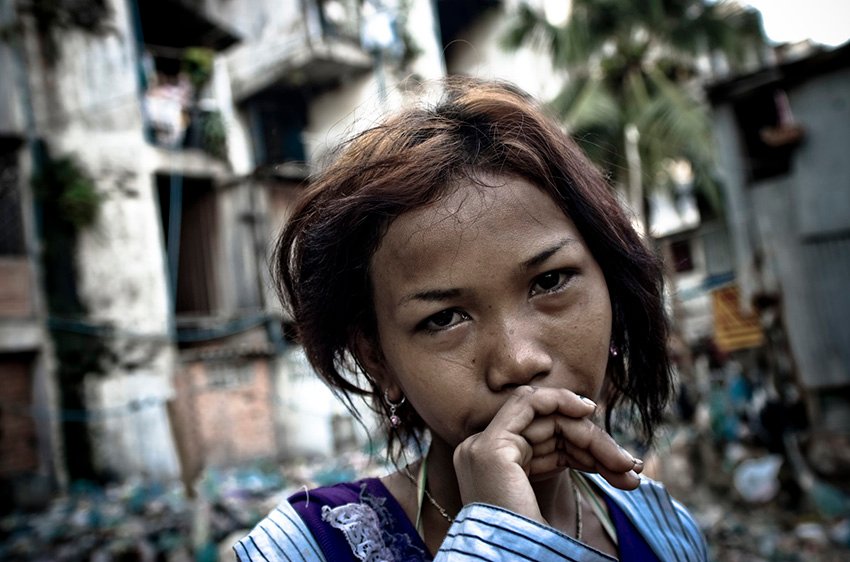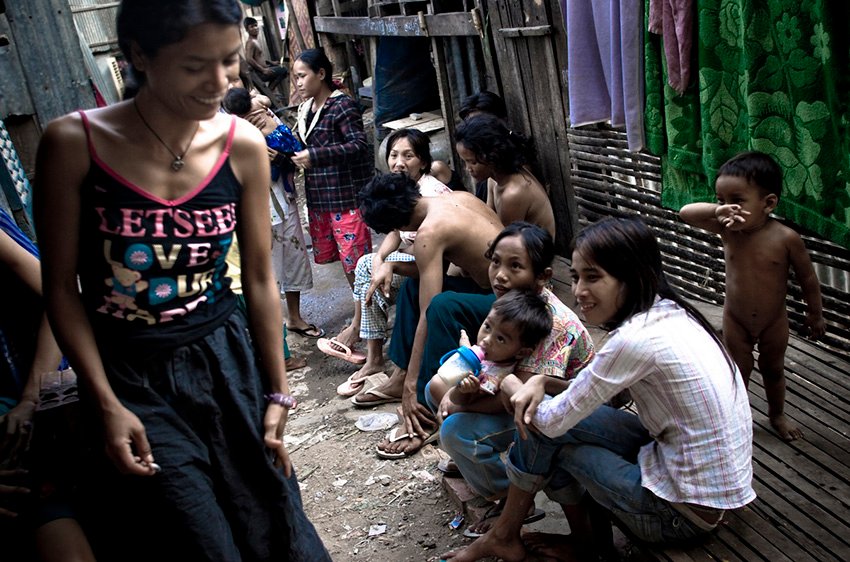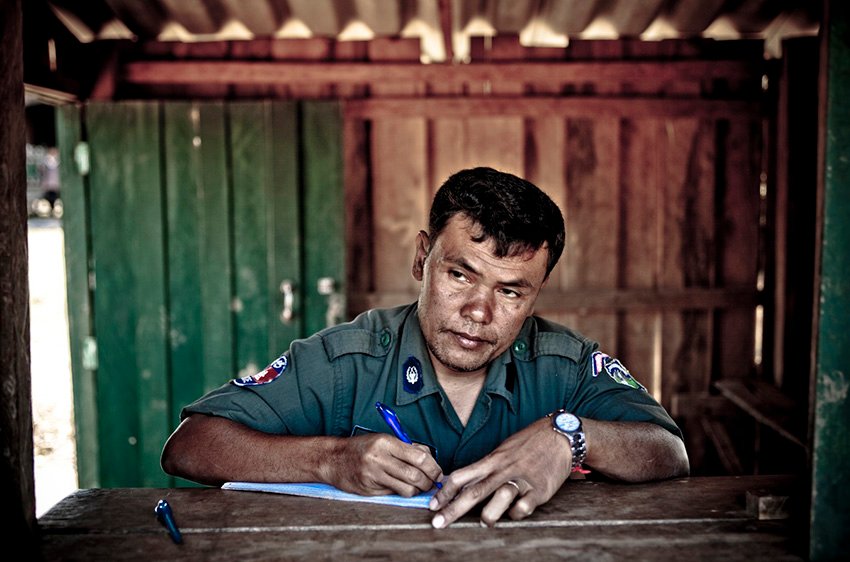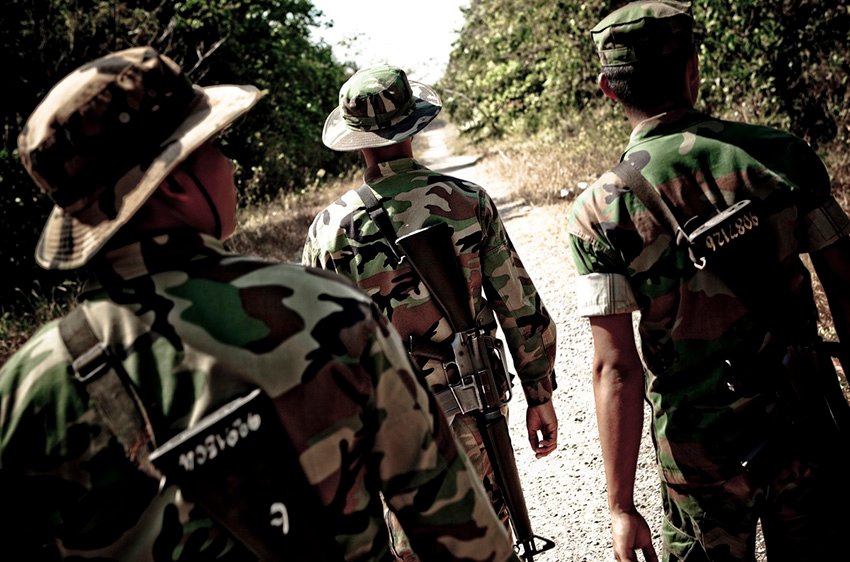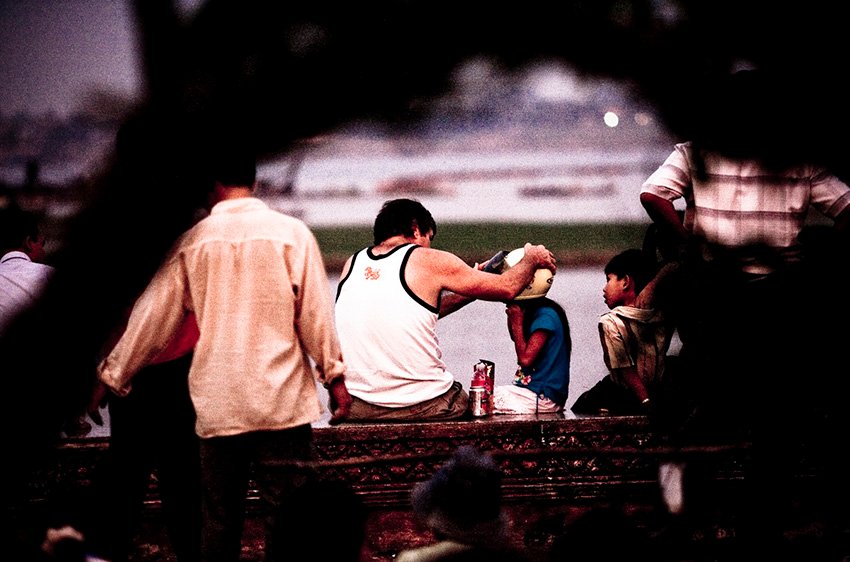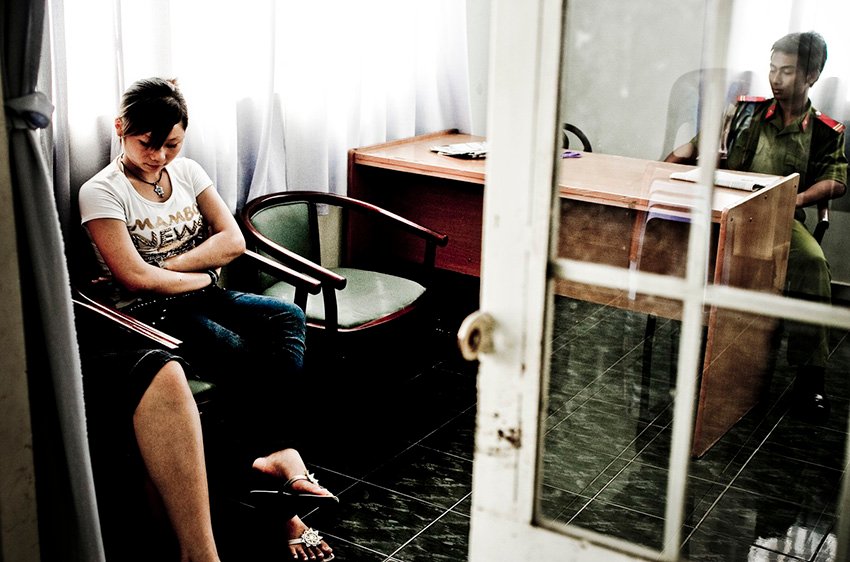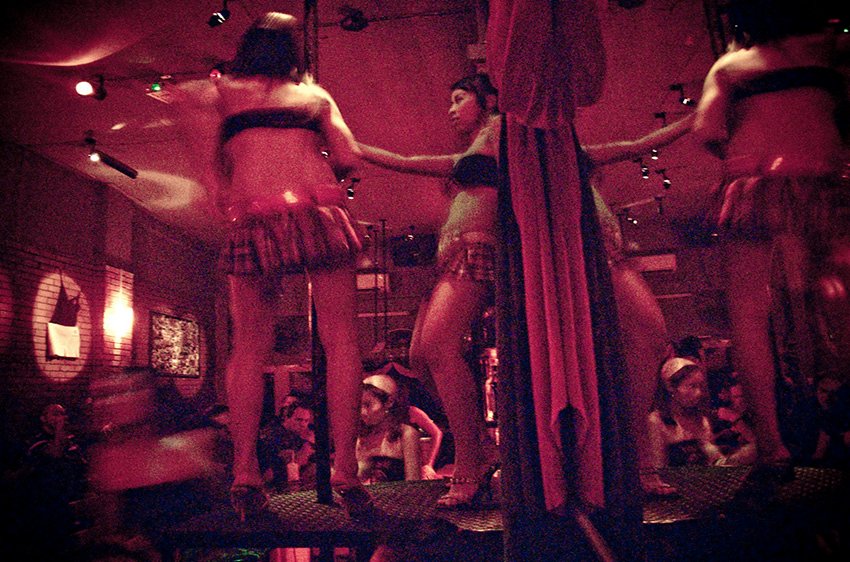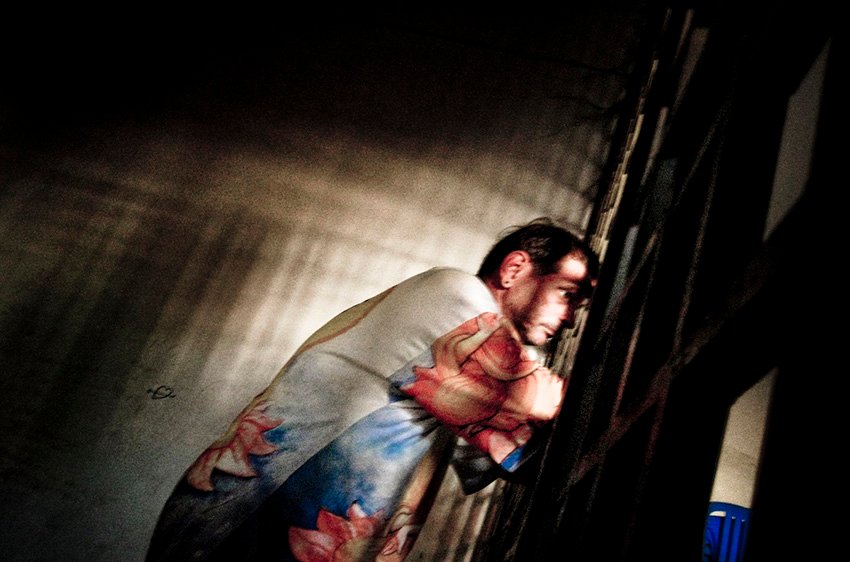U.S.A. –
Multimedia journalist Tim Matsui calls himself a storyteller. And once you’ve taken a look at his work, you know exactly why. Matsui strongly believes about issues related to human trafficking and sexual violence and has recently won the Alexia Foundation‘s Women Initiative Grant for his work to the same effect. Emaho spoke with Tim Matsui about his work and projects close to his heart.
Manik: Tell us a little about your journey from still photography to multimedia journalism.
My journey from still photography to multimedia journalism is about wanting to share more of an experience with viewers. News photography uses a single image to tell a story. I’ve enjoyed shooting news over the years, but found myself leaning towards multiple images for a story. In the 1990’s I played with slide projectors and a dissolve unit with rudimentary audio cut on a computer to create a multimedia show. I felt this was a much richer form of storytelling. Technology has made it more affordable to shoot and edit films, enabling my storytelling to evolve as well.
Manik: Human trafficking and sexual violence are two issues you address often in your stories. What made you choose to focus on these issues?
My choosing to focus on human trafficking and sexual violence is a long progression. How I intend to document the story of ‘Domestic Minor Sex Trafficking in Seattle’ is a little more straightforward. Years ago I was asked to help with a youth outdoor program; the teacher who ran it committed suicide during an investigation into inappropriate conduct with students. Students both condemned and praised him. What puzzled me were those who rationalised. They felt all the good he did outweighed any bad. As I talked this over with friends, I found a surprising number who had personal experience with rape or abuse. This learning experience brought me to produce documentary stories about how sexual violence affects individuals and communities, and to eventually create a non profit.
The human trafficking work came about because of an awareness of the issue and a couch to sleep on in Thailand. Friends of mine had moved there, so I visited with the purpose of spending time with them and researching human trafficking. I found Thailand’s sex industry well established but I spent one week in Cambodia, during which time I visited with Somaly Mam and her organization AFESIP. Somaly gave me access. During that week I also saw how raw Cambodia is. On subsequent trips I worked with many other NGOs, helping me to understand the importance of labour trafficking and I formed the opinion that human trafficking is merely a symptom of greater issues.
Here, in Seattle, I have built upon the relationships from my sexual violence work to keep abreast of how the region is addressing human trafficking. I intend to tell three stories, that of a cop who started an aftercare organization, a victim story, and a pimp story. Woven together I hope they reveal how Domestic Minor Sex Trafficking has evolved and the role community plays in addressing it. It’s a step back to my sexual violence work where I tried to help communities understand what rape or abuse means to an individual, what “consent” looks like, what a “bystander” is, and how friends and family can be supportive and part of the healing process.

‘A young woman in a Phnom Penh slum. Investigators later found her mother was pimping the drug-addicted girl nightly to upwards of 10 Cambodian men’
Manik: During the course of your working on the issue of sex trafficking, have you ever suffered a mishap?
I feel I’ve done a good job of risk assessment, building relationships, and being judicious about what elements I need for a story and what I don’t. I have yet to suffer any real mishaps while working on the sex trafficking stories, and hope to keep it that way.
Manik: You are a regular speaker at the World Council of Affairs hosted by the US Department of State. What are the kinds of issues you address there?
Through its local partner, World Affairs Council, the US Department of State has brought both professionals and youth to the Seattle area. I have spoken on topics of sexual violence, human trafficking and the use of media to engage communities on these issues. Lately I’ve been working with Iraqi, Mexican, and Serbian youth to help them look at storytelling in a new way. I focus on character driven narratives, universal themes, and multiple distribution platforms, all with the purpose of engaging audiences and helping them create change.

‘Prostitute Srey Bee (left) relaxes before a night of sex work in a nearby park in Phnom Penh, Cambodia. She lives with other prostitutes in a downtown slum known for its gangs, pimps, prostitutes, and high rate of HIV’
Tell us a little about the FEAR project.
The FEAR Project came about through my work on sexual violence. It was intended as a way for other people to become involved in creating dialogue about how the effects sexual violence has on individuals and communities. My documentary multimedia anchored everything. The Army and the Navy both made bulk orders of my work for their sexual assault programs, and clinics across the country licensed the media too. Here, in Seattle, we did many facilitated discussions with health classes and professionals, including Sexual Assault Nurse Examiners, and when I won a $22,000 grant from Opens Society Institute, we expanded the speaker program to 65 classrooms in one year.
Later, I found a way to engage communities through testimonial portraits. We asked people if they felt sexual violence impacted their community, and then produced a stylised portrait. It’s fairly low-commitment for the individual and doesn’t reveal if he or she has personally suffered. What it does is create something people can talk about, hopefully fostering a safe space for people to come forward to really address the issue. The testimonial portraits create the event, gets a person thinking, and we engaged them again when we hung the show a week later. We also did anonymous surveys and shared these results.
Manik: You have also extensively documented alternative energy, the environment and climate change in your stories. What makes you pick a story to do with the environment?
I like science, I like the environment, and I am conscious of my footprint on the planet. Some of my experiences in the mountains as a climber drives this awareness. I think, like the social justice issues I report on, if I can tell stories about new technologies, energy solutions, or our environment I may be able to engage people to actively care for our planet. I’m looking for solutions.

Manik: You worked on a project on Pakistan that had you nominated for an Emmy Award! How did that come about?
I applied for an internship with MediaStorm. I’ve known Brian Storm for years and I knew working with his team would up my game. When he called, he asked why I’d want to do an internship, considering all the work I’d already done. I felt I knew enough to know that I didn’t know enough; there is always more to learn. They typically take recent graduates as interns. Since my time there, they’ve developed a “Professional in Residence” program, which may have been a better title for my role.
One of my projects was the lead producer role on the overview to the Council on Foreign Relations’ “Crisis Guide to Pakistan.” It was amazing. I sourced incredible images from gifted photographers, sifted through hours of news reel, and built visual sequences to match the narrative CFR provided. Some of those sequences ended up on the cutting room floor, but they still give me chills. I loved working with the MediaStorm team and consider the opportunity one of the highlights of my career.
 ‘Srey Kah, a prostitute after a clinic visit at the NGO “Acting for Women in Distressing Situations” (AFESIP) which conducts outreach and provides services in Phnom Penh, Cambodia for victims of sex trafficking. Srey Kah was raped at 16 in her home town, later she was sold by a friend and held captive as a sex worker, then arrived in Phnom Penh and turned to prostitution to survive; she has survived beatings, gang rapes, drugs, and self mutilation. She continues as a prostitute so she can support her mother and put her younger sister through public school. Srey Kah’s story is not unique. AFESIP offers housing, education, training, and counseling for women who are victims of sex trafficking, worked as prostitutes, or are escaping domestic violence. Founded by Somaly Mam, who herself was once a prostitute and victim of trafficking and domestic abuse, AFESIP has three facilities in Cambodia and works with other NGO’s to provide long term care for the women.’
‘Srey Kah, a prostitute after a clinic visit at the NGO “Acting for Women in Distressing Situations” (AFESIP) which conducts outreach and provides services in Phnom Penh, Cambodia for victims of sex trafficking. Srey Kah was raped at 16 in her home town, later she was sold by a friend and held captive as a sex worker, then arrived in Phnom Penh and turned to prostitution to survive; she has survived beatings, gang rapes, drugs, and self mutilation. She continues as a prostitute so she can support her mother and put her younger sister through public school. Srey Kah’s story is not unique. AFESIP offers housing, education, training, and counseling for women who are victims of sex trafficking, worked as prostitutes, or are escaping domestic violence. Founded by Somaly Mam, who herself was once a prostitute and victim of trafficking and domestic abuse, AFESIP has three facilities in Cambodia and works with other NGO’s to provide long term care for the women.’
Manik: Apart from documenting domestic minor sex trafficking, what are the other projects you plan on working on in the future?
The Alexia grant work is going to be quite consuming. That said I’ve got clients with on-going projects. My focus lately is to work with companies and their Corporate Social Responsibility teams. They need stories, authentic stories, to inspire within the company, to encourage their corporate peers, and inform their consumers. These aren’t big budget marketing jobs, but they’ve got more budget than editorial and they’re more meaningful for me than producing corporate advertising or PR to sell more stuff. I’ve been very lucky in finding some great people to work with.
I’ve also got a couple of fellowship proposals in mind, but need to make the time to write them.
 ‘Cambodian chief of border police at the remote Kao Wong crossing near Koh Kong, Cambodia’
‘Cambodian chief of border police at the remote Kao Wong crossing near Koh Kong, Cambodia’
Manik: What do you aim to achieve with your images? Which set of photographs that you have taken, according to you, forms a story with the greatest impact?
I started with photography simply to share experiences. Now, I want to share stories that build awareness and inspire people to act. I believe we all have a part in solving the injustices of the world; it’s just how do we engage in those solutions? This is where partnerships play an important role. Partners can provide access to a story, but they can also provide the engagement component for the audience.
I have some favourite images and stories, but I can’t quantify their impact. Some images I’ve made I love dearly, but they aren’t well received whereas others were mere afterthoughts of framing and exposure, and they became the favourites of others. It’s hard to say.

‘A slum building in downtown Phnom Penh, Cambodia, where drugs and prostitution are rampant. Human trafficking survivor Srey Neth was sold here, by her mother, at age 14 to a pimp who later sold Neth’s virginity for $300’
Manik: Many photographers use monochrome to create a poignant picture. I’ve noticed your images are rarely black and white. Do you prefer colour to monochrome?
Monochrome is cool. I started shooting Tri-X and printing on Ilford RC paper. There’s just a certain richness and mood you can produce with colour that I like. I’m shooting digital anyway, so I can play with the tone, saturation, etc. in post, staying within accepted journalistic norms for image processing. I think it’s just one of the many tools visual journalists have at their disposal.
Art & Culture Interviewed by: Manik Katyal and Marukh Budhraja
Pictures by: Tim Matsui
